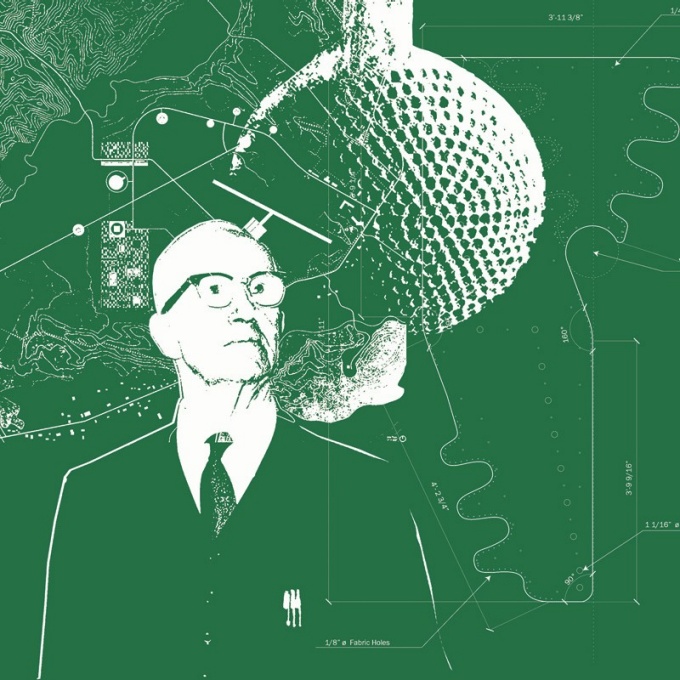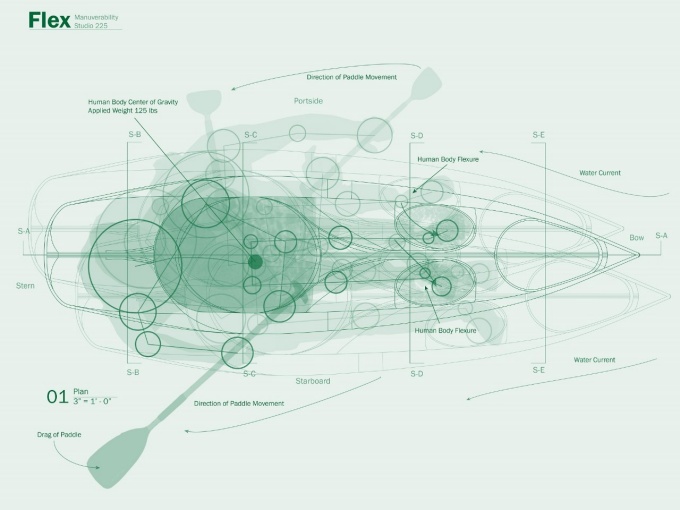Responding to Buckminster Fuller
Impact & Agency

11.21.2019 | Lukas Fetzko | Grace DeSantis | Michael Hoover | Emily Kutil |
Kenneth MacKay | Christopher Romano
Lukas Fetzko: I understood Fuller was stressing the need for architecture schools to embrace research and cross-disciplinary collaboration in order to address the future problems that he had foreseen, and they actually might be able to acquire funds, with the connection to all these different entities that a private practice would have because a private practice is also concerned with their own profit and making their livelihood on top of design and research. Which, in his opinion, at the time was perhaps not as easy.
Today we see that a lot of offices are creating these R&D departments that are creating really provocative work. But schools and universities, in general, are also really taking that seriously. And then, a bit more specifically to UB, the School of Architecture and Planning has taken advantage of connections to different departments. The Smart Lab, Media Studies, the IDeA Center, those are the kinds of entities within the school that are starting to connect to other departments and create some really interesting work. The focus on both contemporary technology and research, as well as connecting that research back into the community, has also been, in my experience, a pretty big focus of the university as well. Interaction with others and other communities is essential. Think of Banham, and then people such as Dennis Maher, Beth Tauke, Linda Schneekloth, Kory Smith, just to name a few of the people who are really taking their work out of the school, into the city, and into the world.
I think Fuller was proposing the taking up of research by universities and schools because he felt it was necessary. But he also felt that maybe practices could not fulfill that sufficiently and that universities may be able to better handle the needs of a research program.
Everyone is hyper-critical of these methods of tradition, craft and experimentation... But in some ways I find that to actually be a better definition for design research today than some of the other borrowed definitions.
- Christopher Romano
Christopher Romano: The problem with the text and the problem with the research is that if we position that academia does research and practice does practice, we’ve already created an enormous problem. If we position that design is in research already and that research is something else that’s not the typical kind of understanding of the design and how design education and design thinking unfolds, I’d argue that it is research. Just the minute it’s parsed out, we create all these problems that are disciplinary, professional, and I think Fuller was understanding them as totally different.
I think your last comment about practices actually creating R&D branches or identifying that they are doing research and that it’s part of the design process is a much more proactive way to discuss the conversation, I think. And to position it in today’s world, because I find that just difficult, like when people say, “What are you researching?” It’s like I’m researching the architectural opportunity on the particular site of the particular program of the particular client. You’re always researching something. Actually, you’re researching too many things as an architect. And you just have to be able to identify some hierarchy between the multiplicity of research trajectories that any design problem has to learn about, so you can properly respond.
And I think that’s how we try and teach our students at both the undergrad and the grad, because I also don’t think we should distinguish between how we teach our undergrads in professional education and how we teach our graduates in a looser kind of GRG structure, because I think that’s just creating more problems than it’s creating answers for, in my personal opinion. So, I just don’t see it as separate. I don’t think it’s anyone’s responsibility and not someone else’s.
Kenneth MacKay: As you were speaking, I was thinking of Llewelyn Davies. Sir Llewelyn Davies, he was a planner, and our library has a beautiful little book that commemorates his speech at the opening of the School of Environmental Design in Edinburgh, Scotland.
There were many diagrams at that time which show architecture as part of a larger field of endeavors. And so you can begin to look at these historically and say, alright there has become a codification, a kind of privileging of professions. There’s a reaction going on, realizing that the professions are by themselves somewhat isolated, and they need to be opened up. And so schools of architecture and schools of environmental design are opening that up.
And a few years ago, I heard someone say, “Buffalo has had a great maker culture.” It was shocking because the person was quite articulate, but it seemed to me that, logically, there’s kind of violence going on there in which you take contemporary frameworks, and you reinterpret the past in those frameworks, right? So, you have to kind of say many of the things that you were stating, Lukas, are very much on our mind, and I think we have to be very careful about looking into the past and reinterpreting those things in ways that serve us.
Fuller was very, very complex, and my guess is that he was as suspicious of the institutions as he was of the professions. And I think it would be interesting to hear what he would say today. But things have changed, and you could see within the ‘80s, there was a radical change in which futurism itself started to be questioned. Aldo van Eyck, for example, started to say that futurism and nostalgia are essentially two sides of the same coin. There’s a nostalgia for something other than where we are. This place, and place itself, is where we should be focused, and that human existence by its nature is kind of disorienting. We’re constantly hit with these outside stimuli and that somehow architecture might place us. And I think that’s a pretty profound statement...

10.02.2019: Katelyn Broat, Deron Charlery, Anita Lin, Jingyu Lu, and Hunter Perez diagrammed the forces of both action and water movement acting on their boat, Flex, as a way to understand the complexities of the human body and how it interacts with its surroundings.
Moderator
LUKAS FETZKO: MArch Student
Participants
GRACE DESANTIS: MUP Student
MICHAEL HOOVER: MArch Student
EMILY KUTIL: Banham Fellow (2019-2020), Adjunct Professor - Department of Architecture
KENNETH MACKAY: Clinical Associate Professor - Department of Architecture
CHRISTOPHER ROMANO: Assistant Professor - Department of Architectureand